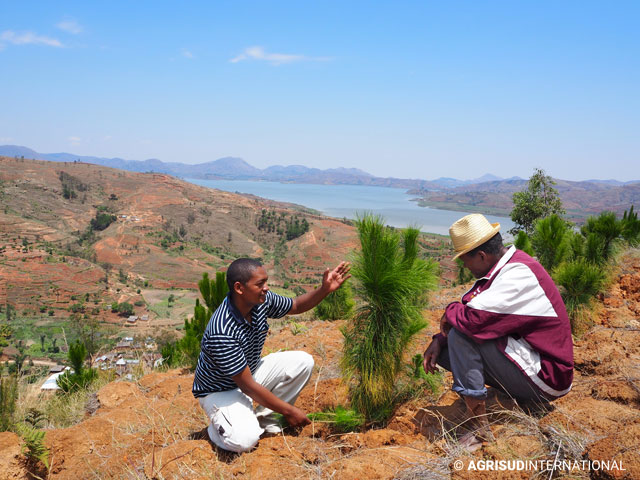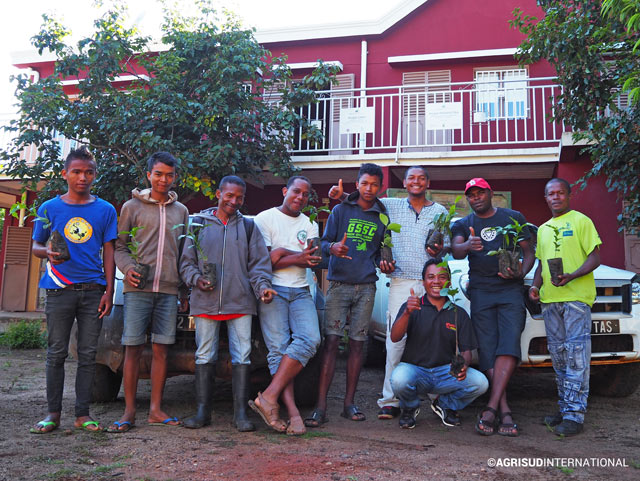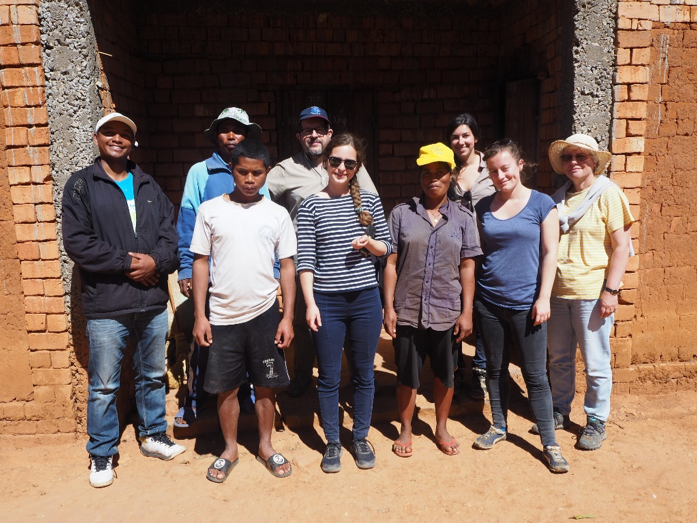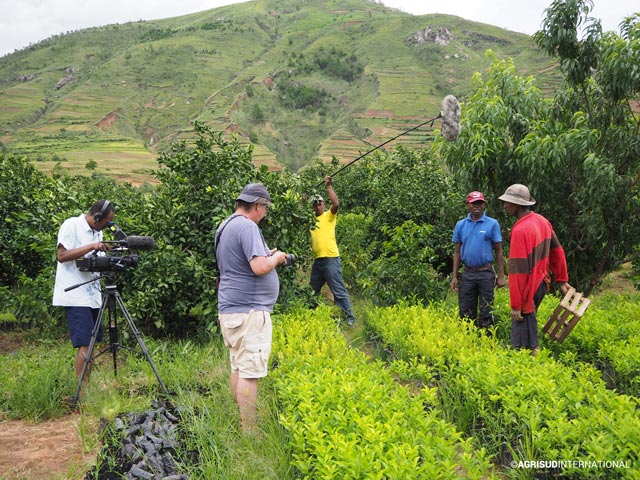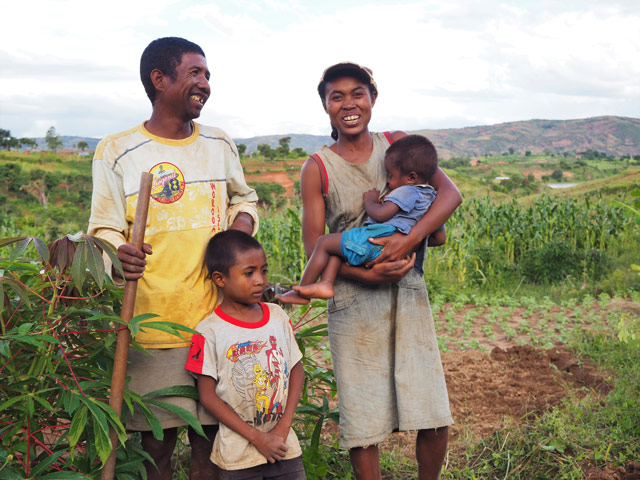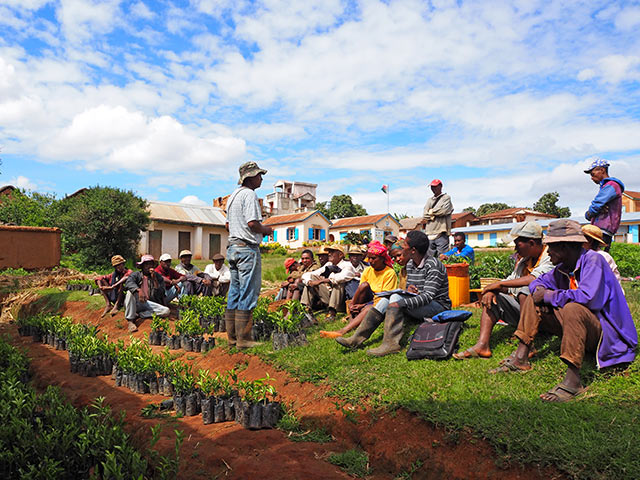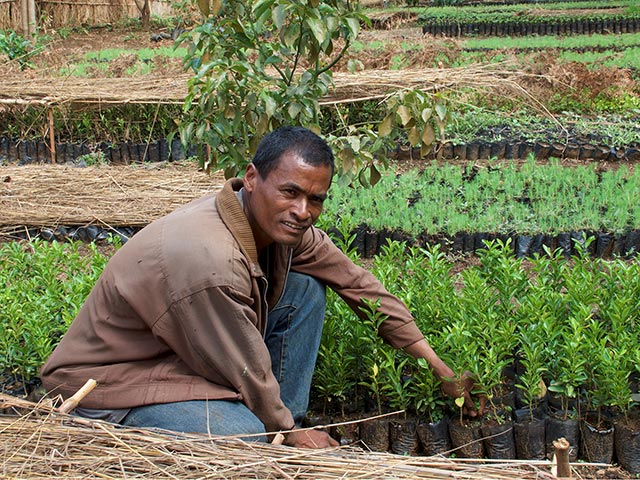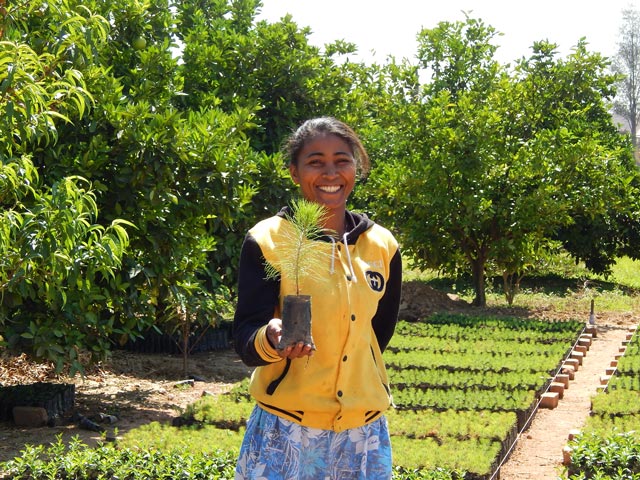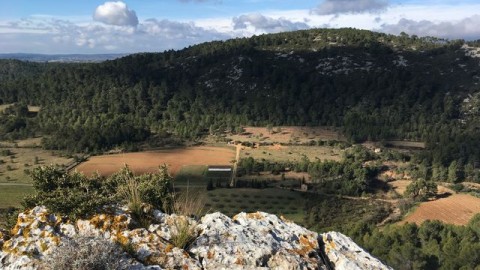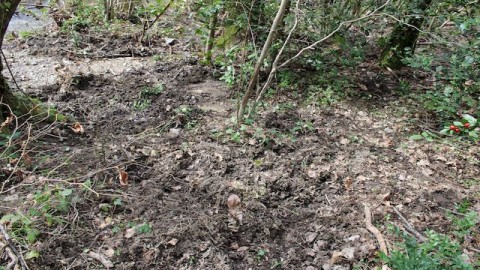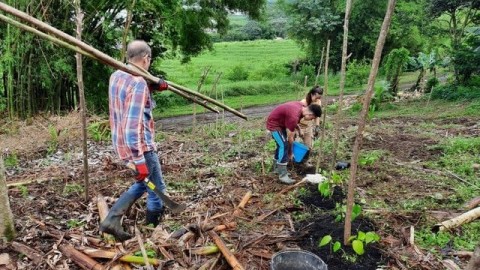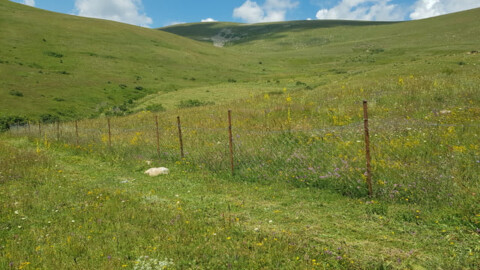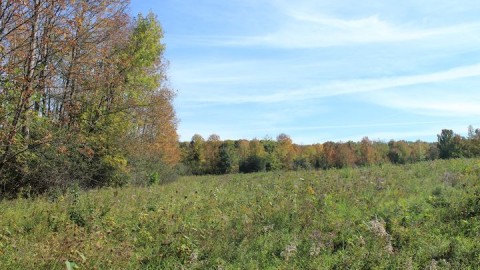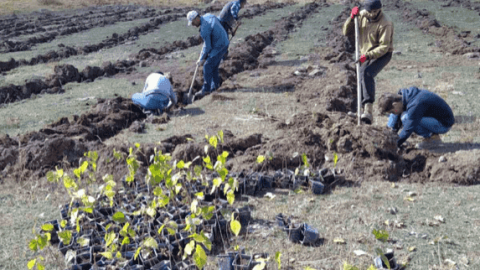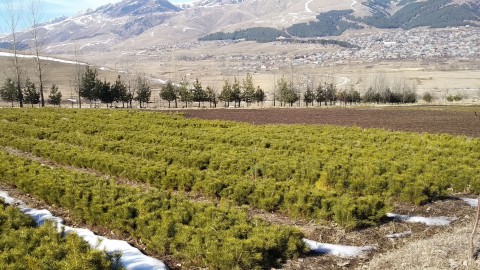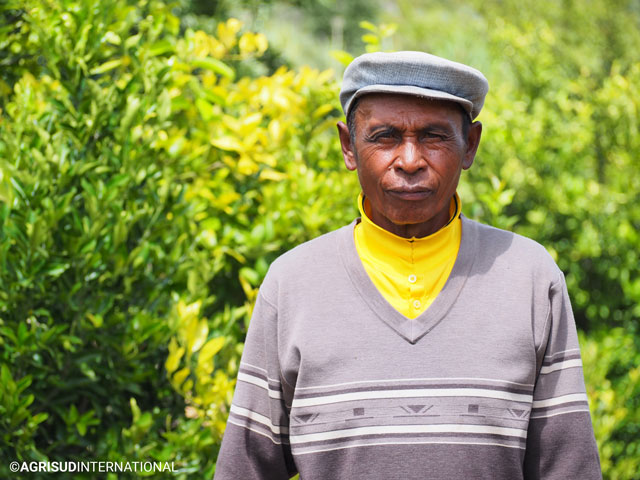
Village of Mandiavato, Itasy (Madagascar), march 2020
The beginning of March is the rainy season in Madagascar and it has been one year since the young plants from the 2018-2019 campaign were planted. However, it is not yet time for most of the project beneficiaries to take stock of the plantations because they have reached a critical stage regarding survival of the seedlings. Indeed, the dry season following the campaign means six months without rain and is extremely cold, especially in the highlands of Madagascar, where temperatures can drop below zero. To compensate for the losses, some farmers have started a in-fill planting phase (new planting).
That is explained by the diagram below:

Mr Eloi, met in the Mandiavato village above Lake Itasy, received many young forest and agroforestry plants in 2018-2019: no less than 500 acacia trees, 400 eucalyptus trees, 120 coffee trees and 60 orange trees. Unfortunately, since his land is low lying, the plantations suffered from the severe frost of June which led to significant loss.
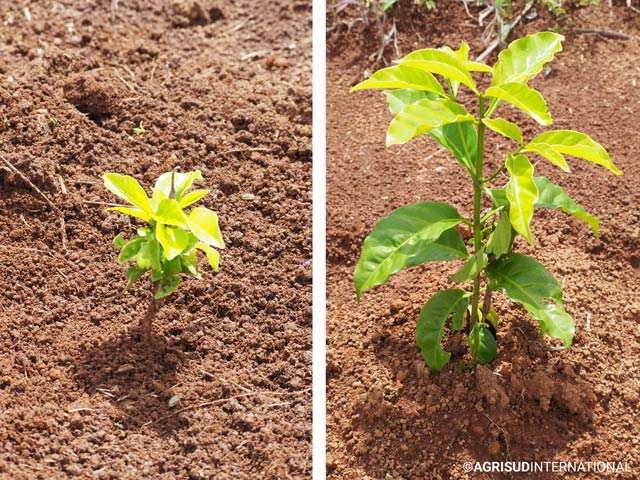
Nevertheless, Mr Eloi remains undaunted by this uncertain climate!
This year he decided to invest his own money to carry out in-fill planting on several plots – 800 pines, 50 mango and 45 nectarine trees (a variety from a colder region of Madagascar). He has also adopted several strategies to limit future losses: planting varieties more resistant to cold in plots less exposed to frost and, as was the case for his coffee trees in 2019, protecting the young agroforestry plants with small shade barriers made of rice straw.
Most of the beneficiary families will wait until the end of the rainy season before taking stock of the surviving plants and considering in-fill planting by the end of 2020.
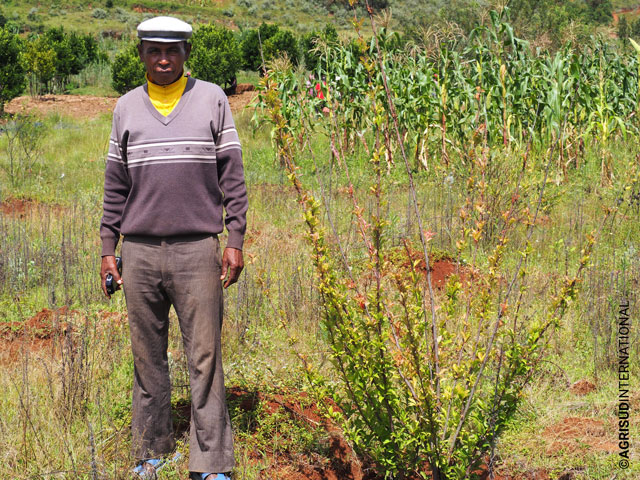
Next article: survival rate review with project technicians


